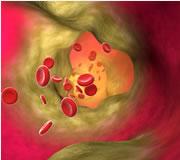“Accumulating evidence suggests that cannabinoid ligands play delicate roles in cell survival and apoptosis decisions, and that cannabinoid CB1 receptors (CB1R) modulate dopaminergic function.
However, the role of CB1R in methamphetamine (MA)-induced dopaminergic neurotoxicity in vivo remains elusive.
Multiple high doses of MA increased phospho-ERK and CB1R mRNA expressions in the striatum of CB1R (+/+) mice. These increases were attenuated by CB1R antagonists (i.e., AM251 and rimonabant), an ERK inhibitor (U0126), or dopamine D2R antagonist (sulpiride).
CB1R agonist-induced toxic effects were significantly attenuated by CB1R knockout, CB1R antagonists or PKCδ knockout.
Therefore, our results suggest that interaction between D2R, ERK and CB1R is critical for MA-induced dopaminergic neurotoxicity and that PKCδ mediates dopaminergic damage induced by high-doses of CB1R agonist.”





